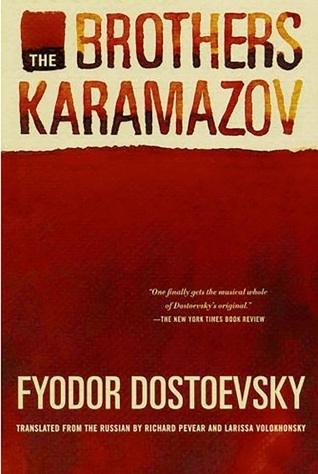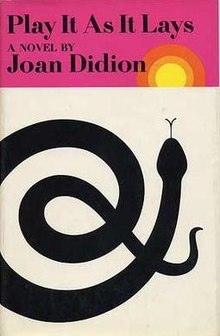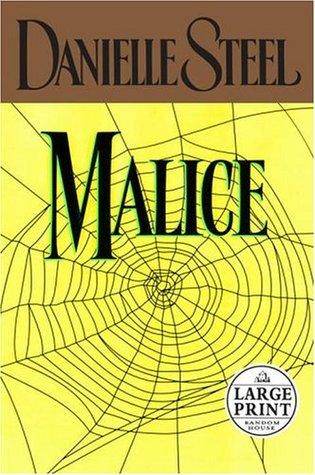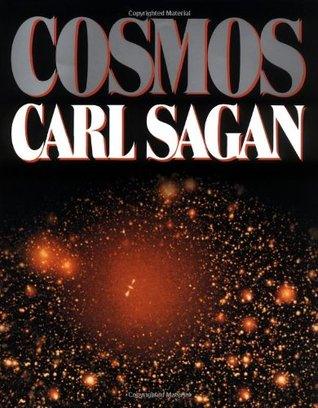The House on Mango Street by Sandra Cisneros Book Summary
Discover a comprehensive summary and insightful review of "The House on Mango Street" by Sandra Cisneros. Explore key themes, character analysis, and essential insights that highlight the novel's impact on literature and culture. Perfect for students and literature enthusiasts alike!
The House on Mango Street Book Summary
Sandra Cisneros’ The House on Mango Street is a poignant coming-of-age novel that captures the struggles and dreams of a young Latina girl growing up in Chicago. Through a series of vivid vignettes, Cisneros explores themes of identity, culture, and belonging with lyrical prose and emotional depth. This summary and review delve into the book’s key insights, revealing why it remains a powerful and influential work in contemporary literature.
Discover in-depth analysis and key takeaways by exploring The Man in the High Castle Book Summary, Review & Key Insights to deepen your understanding of this captivating novel.
The House on Mango Street by Sandra Cisneros - Introduction
I had no idea a book with just 110 pages could pack such a punch. When I first picked up The House on Mango Street by Sandra Cisneros, I thought it would be a straightforward coming-of-age story, maybe something I'd breeze through because it’s often assigned for school. But what surprised me was how it’s not just one story—it’s like a collection of poetic short stories that together paint this vivid picture of growing up in a Latino neighborhood. Reading it felt like having a heart-to-heart with someone who’s figuring out their place in the world, and it made me rethink how much our environment shapes who we become.
I grabbed this book because it kept popping up on lists of classics and contemporary realistic fiction—plus, it’s often recommended for young adults. But honestly, it’s not just for teens or students. If you’re someone who’s ever felt caught between worlds or struggled with identity, this book will speak to you. It’s intimate, relatable, and honest in a way that pulls you in without feeling heavy.
You’ll appreciate it if you like fiction that reads like poetry, with moments that make you pause and reflect. It’s perfect for when you want something short but meaningful—something you can finish in a couple of hours but that stays with you long after. So if you’re looking for a quick, powerful read that’s both realistic and beautifully written, this one’s definitely worth your time.
What is The House on Mango Street About?
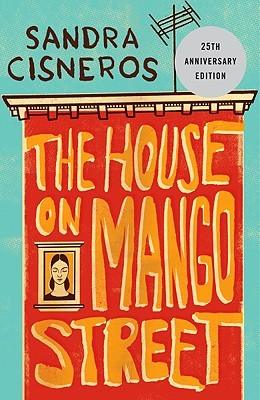
The House on Mango Street by Sandra Cisneros is a coming-of-age novel that chronicles the life of Esperanza Cordero, a young Latina girl growing up in a Chicago neighborhood, as she navigates her identity and dreams of a better life. The main message emphasizes the importance of self-identity and the struggle for empowerment within a challenging environment. Key concepts include the impact of cultural heritage on personal identity, the significance of community and belonging, and the desire for escape and independence from societal constraints.
About Book Author - Sandra Cisneros
Tonight, it's a genuine pleasure to welcome our speaker. Sandra Cisneros didn't start out aiming to define a literary voice, but her personal quest, navigating Chicago neighborhoods and the constant search for a true home, directly fueled The House on Mango Street. What's interesting about Sandra is her early feeling of being an 'interpreter' for experiences often overlooked, a sentiment that pushed her to find an authentic way to tell her stories. She discovered her powerful narrative style not by mimicking others, but by listening closely to the rhythms of her own community. This profound understanding of bicultural identity and the yearning for belonging is precisely why her words resonate so deeply, not just in Mango Street, but across her works like Woman Hollering Creek and Caramelo. She writes from a place of lived discovery, making her uniquely positioned to share these insights.
More Books To Find
The House on Mango Street - Book Overview
The House on Mango Street is about a young Latina girl named Esperanza growing up in a Chicago neighborhood. It’s a series of vignettes that capture her experiences, dreams, and struggles as she navigates her identity and seeks a better life. Think of it like a collection of snapshots that together paint a vivid picture of her world.
Cisneros wrote it not just to tell a story about growing up, but to give voice to the often overlooked Latina experience. She wanted to highlight the complexities of culture, gender, and class, making it relatable to anyone who’s ever felt out of place or dreamed of something more.
What sets this book apart is its poetic style and the way it combines personal stories with broader social themes. Unlike many coming-of-age stories, it doesn’t follow a traditional narrative arc; instead, it feels more like a mosaic of moments that resonate emotionally.
One story that really stuck with me is when Esperanza describes her desire for a house of her own, a place where she can feel safe and free. It’s a simple wish, but it captures her longing for independence and a better future. That longing is something we can all relate to, no matter our background.
Key Insights of The House on Mango Street
The House on Mango Street by Sandra Cisneros offers profound insights into identity, culture, and the struggles of growing up.
1. Identity and Self-Discovery: The protagonist, Esperanza Cordero, navigates her Mexican-American identity, grappling with the dualities of her heritage. Her journey reflects the search for personal identity amidst cultural expectations.
2. The Significance of Place: The neighborhood of Mango Street serves as a character in itself, shaping Esperanza’s experiences and aspirations. It symbolizes both confinement and the desire for escape, illustrating how environment influences identity.
3. Gender Roles and Expectations: The book highlights the challenges faced by women in a patriarchal society. Esperanza observes the limitations placed on women around her, fueling her desire for independence and a life beyond traditional roles.
4. The Power of Language: Cisneros emphasizes the importance of storytelling and language in shaping identity. Esperanza’s voice evolves throughout the narrative, showcasing her growth and the power of words to express her thoughts and feelings.
5. Hope and Aspiration: Despite the struggles depicted, there is a prevailing sense of hope. Esperanza dreams of a better future and a house of her own, symbolizing her determination to break free from the constraints of her current life.
These insights collectively underscore the themes of belonging, resilience, and the quest for self-empowerment in a complex world.
Who Should Read This Book
"The House on Mango Street" by Sandra Cisneros is a must-read for anyone interested in the complexities of identity, culture, and the immigrant experience. It resonates with young adults navigating their own journeys of self-discovery and belonging. Readers who appreciate lyrical prose and powerful storytelling will find themselves captivated by Esperanza's poignant reflections. Additionally, educators and those studying literature will benefit from its rich themes and narrative style. Ultimately, this book speaks to anyone seeking a deeper understanding of the diverse experiences that shape our lives and communities.
Read If You Are
- Seeking a deeper understanding of the Latino experience in America
- Interested in coming-of-age stories that explore identity and culture
- Looking for a unique narrative style that blends poetry and prose
Skip If You Are
- Looking for a fast-paced, action-driven narrative.
- Uninterested in character-driven stories that explore cultural identity and personal growth.
- Prefer traditional linear storytelling over poetic and vignette-style writing.
Important Takeaways from this Book
-
Write a short story about your childhood. Reflect on a specific memory that shaped who you are today. This matters because storytelling fosters self-awareness and helps you connect with others. No prerequisites needed; just grab a notebook or open a document and start writing.
-
Create a vision board that represents your dreams and aspirations. Collect images, quotes, and items that inspire you. This action matters because visualizing your goals can motivate you to pursue them actively. You’ll need magazines, scissors, glue, and a board or poster to get started.
-
Spend 10 minutes each day observing your surroundings and jotting down your thoughts. Focus on details—how people interact, the colors you see, or the sounds you hear. This practice enhances mindfulness and appreciation for everyday life. No special tools required; just a notebook or a notes app on your phone.
-
Initiate a conversation with someone from a different background or culture. Ask them about their experiences and listen actively. This matters because it broadens your perspective and fosters empathy. No prerequisites; just find someone in your community or workplace and approach them with genuine curiosity.
-
Volunteer at a local organization that supports underprivileged communities. Whether it’s tutoring, serving meals, or organizing events, this action matters because it allows you to give back and make a tangible difference in others' lives. Research local opportunities and commit to a specific time each week.
Book Review
I picked up "The House on Mango Street" by Sandra Cisneros with high expectations, having heard so much about its lyrical prose and poignant themes. What I got was a beautifully woven tapestry of vignettes that capture the essence of growing up as a Latina in Chicago.
One of the book's greatest strengths is its writing style. Cisneros has a unique ability to create vivid imagery with just a few words. For instance, her description of Esperanza’s house—“a little red house” that “is not the house we want”—perfectly encapsulates the longing for a better life. The pacing is quick, which I initially found jarring, but it ultimately mirrors the fleeting moments of childhood and the urgency of Esperanza’s dreams.
However, while the brevity of the vignettes is often a strength, there were times I wished for deeper exploration of certain themes. Some characters felt underdeveloped, leaving me wanting more context about their stories. For example, I wanted to know more about Sally’s struggles, as her character felt pivotal yet somewhat glossed over.
In comparison to similar coming-of-age stories like “The Joy Luck Club” or “The Absolutely True Diary of a Part-Time Indian,” I found “The House on Mango Street” more poetic but less narrative-driven.
Overall, I found the book to be a heartfelt reflection on identity and belonging. I’d recommend it to anyone interested in lyrical storytelling and cultural narratives, but those who prefer a more traditional plot structure might find it lacking. It’s a quick read that left me contemplating long after I turned the last page.
Final Thoughts
If I'm being honest, finishing The House on Mango Street left me with a profound sense of appreciation for the complexities of identity and belonging. The book's vignettes beautifully capture the struggles and dreams of a young Latina girl growing up in a Chicago neighborhood, and I found myself reflecting on my own experiences of home and community.
I'd definitely recommend this if you're someone who enjoys character-driven stories that explore cultural nuances and personal growth. However, skip this one if you're looking for a traditional narrative with a straightforward plot; it’s more about the emotional journey than a cohesive storyline.
The thing that surprised me most was how relatable Esperanza’s voice felt, despite the cultural differences. Months from now, I know I'll still be thinking about her dreams of escaping Mango Street and the bittersweet reality of her life.
As for rereading, I’d choose the full book over a summary any day; the richness of Cisneros's prose deserves to be experienced in its entirety. Overall, my reading experience was both enlightening and moving—definitely a book that lingers long after the last page.
Frequently Asked Questions
How long does it take to read The House on Mango Street?
The House on Mango Street by Sandra Cisneros is approximately 110 pages long. Most readers can complete it in about 3 to 5 hours, depending on reading speed and engagement with the text. Enjoy the journey through Esperanza's world!
What makes "The House on Mango Street" different from other books in this genre?
The House on Mango Street stands out for its unique narrative style, blending vignettes and poetic language. Cisneros captures the complexities of identity and culture through the eyes of a young Latina girl, offering a deeply personal and relatable exploration of community and self-discovery unlike traditional coming-of-age novels.
Who is the target audience for The House on Mango Street
The target audience for "The House on Mango Street" includes young adults and readers interested in coming-of-age stories, particularly those exploring themes of identity, culture, and community. It resonates with individuals seeking diverse perspectives, especially within Hispanic and immigrant experiences in urban settings.
Are there any criticisms or limitations of The House on Mango Street
Critics often point to the book's fragmented narrative style, which some feel lacks depth in character development. Additionally, its portrayal of cultural identity may not resonate with all readers, leading to varied interpretations of the themes presented in the story.
What is the main theme of The House on Mango Street by Sandra Cisneros
The main theme of "The House on Mango Street" is the search for identity and belonging. Through Esperanza's experiences, the novel explores issues of gender, culture, and socio-economic challenges, highlighting the struggles and aspirations of a young Latina girl growing up in a marginalized community.
Tags:
Sandra Cisneros, The House on Mango Street, The House on Mango Street Book, The House on Mango Street Book Rating, The House on Mango Street Book Review, The House on Mango Street Book Summary, The House on Mango Street By Sandra Cisneros, The House on Mango Street Description, The House on Mango Street Short Summary

Michel Fisher
Michel Fisher is a passionate fiction enthusiast and book blogger who writes about emotional reads, character-driven stories, and contemporary romance authors that captivate hearts and minds.

The House on Mango Street
Book Overview
Description
Acclaimed by critics, beloved by readers of all ages, taught everywhere from inner-city grade schools to universities across the country, and translated all over the world, The House on Mango Street is the remarkable story of Esperanza Cordero. Told in a series of vignettes – sometimes heartbreaking, sometimes deeply joyous–it is the story of a young Latina girl growing up in Chicago, inventing for herself who and what she will become. Few other books in our time have touched so many readers.
Key Points
Identity struggles shape personal growth
Characters
Esperanza, Nenny
Publisher
Vintage
First Publish Date
10/28/84
Awards
American Book Award (1985), "George C. Stone Center for Childrens Books Recognition of Merit Award (1994)"


